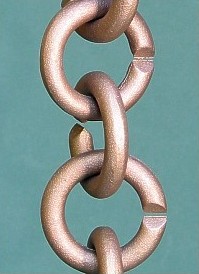
St. Luke's Chamber Ensemble, photo courtesy of the Kennedy Center |
The Fortas Chamber Music Series decided to attempt to create a new holiday tradition in the Kennedy Center Terrace Theater, by importing a performance of Bach's Brandenburg Concertos from Lincoln Center. In each of two performances on Wednesday and Thursday, the Chamber Ensemble of the Orchestra of St. Luke's presented the entire set of six concertos in one evening, a feat that is manageable when the fast tempos are pressed ahead (although six individual stage set-ups add considerable time). Disappointingly, the group opted to present the concertos not in the order in which Bach copied them by hand into the manuscript to be offered to the Margrave of Brandenburg, whence the concertos' name.
It is easy to understand the temptation of reordering: you can end both halves with the most popular concertos (the paired recorders of no. 4 and the clarino trumpet of no. 2, respectively, which allows the trumpeter to show up late, just in time for his only work on the program) and you can sandwich the enigmatic no. 6 (with its pairs of violas da gamba and solo violas -- what was Bach thinking?) in the middle of the first half, the slot normally reserved for unpalatable atonal music. Given what we know about Bach's practice of creating large forms when joining works together into sets, however, it is most likely that the choice of order was not only intentional but significant.
These were reputable performances, at times technically impressive and at others a little stodgy, that stood out as distinctly old-fashioned to ears familiar with any of the spectacular recordings by historically informed performance (HIP) ensembles of the last two decades. Here we had all modern instruments, no Baroque bows, flutes instead of recorders, French horns instead of corni da caccia, cellos instead of violas da gamba, and no violino piccolo. Why not a Steinway instead of a harpsichord? Throughout much of the evening the performances gave me flashbacks of listening to my parents' 1968 LP of Benjamin Britten's recording of the Brandenburgs with the English Chamber Orchestra, a set still in my collection and still occasionally given a spin on the old turntable for a misty-eyed bit of nostalgia. This is not to say that the only way to play the Brandenburg concertos is with HIP instruments, just that the experience is much more enjoyable that way.

Manuscript, Brandenburg Concerto no. 3
The solo oboe playing of Stephen Taylor stood out in no. 1 and throughout the evening for consistent tone and nimble embellishments, while Naoko Tanaka's violin solo was a little shallow and scratchy in no. 1. In the strange, low-lying no. 6 (placed at the end of the collection probably as a final statement of Bach's ability to write an interesting concerto for no matter what motley assortment of instruments), the two solo violas were not well matched in tone, which spoiled most of the piece's effect. Flutist Elizabeth Mann gave a penetrating and mercurial performance in her two big appearances, in no. 5 and as first recorder flute in no. 4. Violinist Krista Benion Feeney had a good handle on the blindingly fast runs in no. 4.
Someone needs to tell harpsichordist Robert Wolinsky to stop mumbling and humming as he plays, and it may as well be me. It was obtrusive enough, especially in the exposed cadenza sections of no. 5 (where one really just wants to hear the notes, please), to bother me halfway up the auditorium. Carl Albach was generally amazing with his elongated piccolo trumpet on the stratospheric clarino part in no. 2, although the one or two notes at the peak of his range barely squeaked out. There were more than a few moments where a conductor could have helped keep the ensemble on the same track, as in no. 2 and the most complicated concerto, the wreath of interwoven strings in no. 3. A dictatorship can have a few advantages over a democracy, at least in keeping order.
If it's more Bach you want to hear, the Washington Bach Consort continues its 30th anniversary season with a program of Bach concertos for various combinations of violin and harpsichords, at the Harman Center for the Arts (January 20, 3 pm). The next concerts in the Fortas Chamber Music Series at the Kennedy Center will feature the Guarneri Quartet (January 10, 7:30 pm) and beloved soprano Dawn Upshaw (January 23, 7:30 pm).











 Rysum (Ost Friesland, Germany):
Rysum (Ost Friesland, Germany): Westerhusen (Ost Friesland, Germany):
Westerhusen (Ost Friesland, Germany): Noordbroek (Groningen region, Netherlands):
Noordbroek (Groningen region, Netherlands): Marienhafe (Ost Friesland, Germany):
Marienhafe (Ost Friesland, Germany): Oude Pekela (Groningen region, Netherlands):
Oude Pekela (Groningen region, Netherlands):




 JFL,
JFL, 
























































